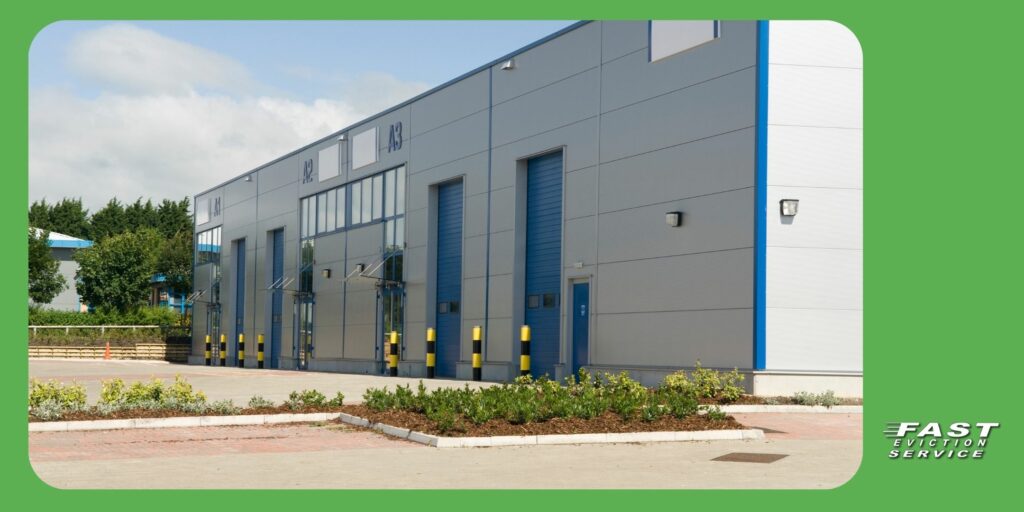You are represented at all times by one of our California Eviction Attorneys | 1-800-686-8686 | intake@fastevict.com | Se habla español
Tenant Improvements in California: A Landlord’s Guide to Allowances, Work Letters, and Lien Risk
When you’re leasing commercial space in California, effectively managing tenant improvements (TIs) can make or break your deal. From setting the right tenant improvement allowance (TIA) to drafting a solid work letter and protecting yourself against mechanics liens, landlords must stay a step ahead. This guide focuses solely on landlord-oriented strategies for the California market – no generalities and no legal advice, just practical insight.
Key Takeaways
- Tenant improvements (TIs) significantly impact rent levels, lease term length, and asset value.
- Defining the scope of the TIA and drafting the work letter properly is crucial to cost control and delivery timelines.
- In California, landlords must address mechanics lien exposure and timely post a Notice of Nonresponsibility to protect their property.
- Using clear funding and disbursement procedures with lien waiver documentation helps maintain control.
- Digital workflows and accounting awareness (including ASC 842 implications) support better management of leases and TI programs.

Table of Contents
- What Counts as a Tenant Improvement
- Setting the Tenant Improvement Allowance
- The Work Letter – Your Risk Control Document
- Paying for TIs – Draws, Reimbursements, and Controls
- California Mechanics Lien Exposure
- Retail Nuance – Co-Tenancy and TI Risk
- Accounting & Capital Planning
- Digital Workflows to Keep TI Projects on Track
- Negotiation Checklist for California Landlords
- Conclusion
What Counts as a Tenant Improvement
From a landlord’s perspective, clarity around what qualifies as a tenant improvement is essential. You’re investing—or agreeing to invest—in modifications that tailor space to a tenant’s needs, so the scope must be well defined.
Interior Scope
Typical TIs include permanent interior changes such as installing or removing walls, upgrading flooring, ceilings, lighting, HVAC systems, and customizing finishes. These improvements enhance the property’s value and justify higher rents.
What Doesn’t Count
Exclude items like desks, chairs, office equipment, temporary partitions, or any building-wide upgrades like a new roof or elevator. Those are landlord capital projects, not tenant improvements.
Terminology Map
- “Tenant Improvement” or “Build-Out”: brokerage or lease language.
- “Leasehold Improvement”: accounting term.
- “Build-Out”: construction terminology.
Understanding these terms prevents miscommunication during negotiations.
Setting the Tenant Improvement Allowance
The TIA is one of the most negotiated terms in commercial leases. Landlords should tie this figure to actual square footage and structure terms that protect their investment.
Market Practice
Most California landlords quote TI allowances in dollars per rentable square foot (RSF). For instance, a $20/RSF allowance on a 10,000 RSF space equals $200,000 in TI funds. This figure influences both rent and lease duration.
RSF vs. Usable SF
Use rentable square feet (RSF) based on BOMA standards for consistency. RSF accounts for shared common areas and ensures fair comparisons between buildings.
Turnkey vs. TIA vs. “As-Is” Delivery
- Turnkey: Landlord manages the full build-out.
- TIA Reimbursement: Tenant manages work, landlord reimburses up to allowance.
- As-Is: No allowance, tenant accepts current condition.
Each structure affects cost control, schedule, and responsibility differently.
The Work Letter – Your Risk Control Document
The work letter is the roadmap for tenant improvements and a landlord’s first defense against scope creep, cost overruns, and delays.
Scope Definition
Clearly define “Base Building” versus “Tenant Work.” Attach drawings and specifications to the lease to avoid disputes.
Budget Mechanics
Include the total allowance, alternates, contingencies, and change-order approval process. Cap change orders and require written authorization from both parties.
Schedule and Delivery
Establish milestones such as Notice to Proceed, Substantial Completion, and Punch-List. Consider adding liquidated damages for missed deadlines.
Quality and Compliance
Ensure all work complies with California codes, ADA accessibility, and Title 24 energy standards. Collect certificates of occupancy, as-builts, and warranties.
Insurance & Indemnity
Require contractors to carry insurance listing the landlord as an additional insured, including waivers of subrogation to protect the asset.
Paying for TIs – Draws, Reimbursements, and Controls
Payment structure determines risk exposure and cash-flow control.
Funding Structures
- Landlord-Managed: You control construction and budget.
- Tenant-Managed with Reimbursement: Tenant oversees work; landlord reimburses.
- Hybrid: Split responsibilities.
Each option affects oversight, cost control, and risk.
Disbursement Process
Tie progress payments to milestones and require lien waivers before each release. Retain 10% until final completion to cover potential claims.
Cost-Overrun Allocation
Clarify who pays if costs exceed the TIA. Tenants typically cover overruns—never leave this undefined.
Documentation Checklist
Require:
- Applications for payment
- Conditional and unconditional lien waivers
- As-built drawings and warranties
- Proof of final inspection
California Mechanics Lien Exposure (Must-Know for Landlords)
Even if tenants hire their own contractors, landlords in California face mechanics lien risks.
Where Liens Come From
Unpaid subcontractors or suppliers may file liens against the property—even when the landlord didn’t contract the work.
Notice of Nonresponsibility
California Civil Code §8444 allows landlords to post and record a Notice of Nonresponsibility within 10 days of learning about the work. This helps protect against liens but must be done properly.
Limits of the Notice
The notice is not foolproof. It must be timely posted and recorded, and if the work is authorized by the landlord, the notice may not prevent a lien.
Practical Protections
- Require licensed, insured contractors.
- Use joint-check arrangements for payments.
- Record Notices of Completion or Cessation to shorten lien periods.
- Obtain lien waivers with every draw.
These steps help shield your property from unexpected claims.
Retail Nuance – Co-Tenancy and TI Risk
Retail leasing adds complexity to TI planning due to co-tenancy and anchor-tenant risks.
Co-Tenancy Impact
Retail TIs are often justified by anticipated customer traffic. If an anchor tenant leaves, reduced foot traffic can undermine the landlord’s ROI on improvements.
Legal Note
California courts uphold co-tenancy clauses, which means landlords must anticipate rent reductions or TI amortization delays when anchor performance drops.
Accounting & Capital Planning (Landlord Perspective)
Understanding TI accounting helps landlords budget accurately and comply with financial standards.
Capital vs. Expense
Many TIs qualify as capital improvements that increase the property’s value. Track these for depreciation and long-term planning.
ASC 842 Considerations
Under ASC 842, TI allowances affect lease assets and liabilities on financial statements. Consult a CPA to ensure compliance.
Amortizing TI Costs
Divide the total TIA by lease term and incorporate it into rent recovery models to maintain profitability.
Digital Workflows to Keep TI Projects on Track
Modern landlords use technology to streamline communication and documentation.
E-Signatures and Document Storage
Digitally manage work letters, change orders, and insurance certificates for transparency and easy retrieval.
Schedule and Cost Tracking
Use project-management software to monitor progress, budgets, and change orders in real time.
Centralized Compliance Records
Keep all permits, insurance certificates, and inspection records organized in a digital folder for easy access during renewals or audits.
Negotiation Checklist for California Landlords
- Confirm TIA per rentable square foot and clarify project delivery type.
- Attach a detailed work letter covering scope, cost, and schedule.
- Define draw process, retainage, and lien waiver requirements.
- Post and record a Notice of Nonresponsibility within 10 days of knowledge.
- Ensure all improvements comply with ADA and Title 24 standards.
- Address retail co-tenancy clauses and amortization terms.
- Review accounting implications with a qualified CPA.
Conclusion
For California commercial landlords, managing tenant improvements effectively is essential to protecting property value, maintaining control, and avoiding legal or financial risk. With careful planning, clear documentation, and strong oversight, TIs can become a powerful tool to attract tenants and enhance your property’s competitiveness. Use this guide and checklist to approach every lease negotiation with confidence and structure.
